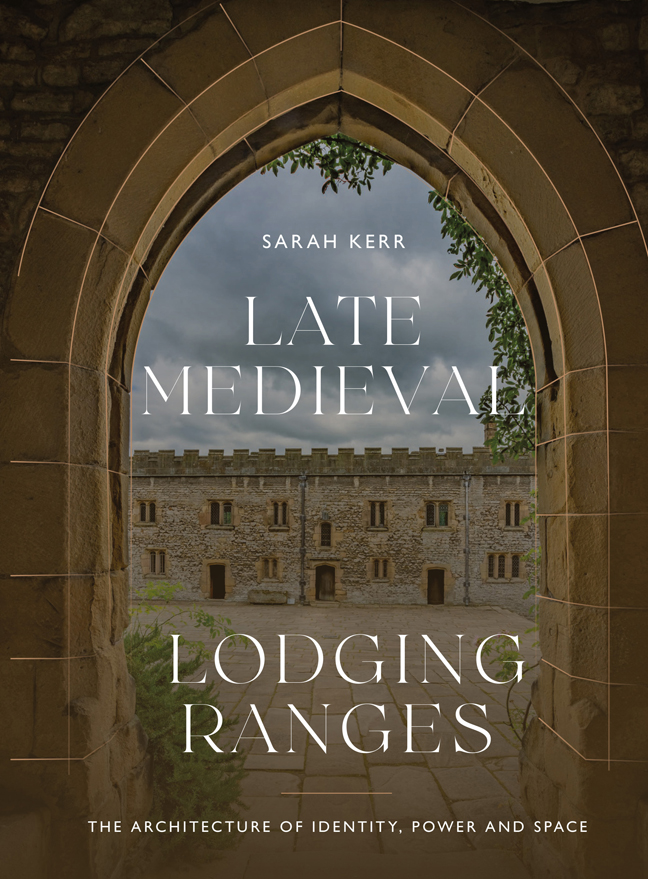Book contents
- Frontmatter
- Dedication
- Contents
- List of Illustrations
- Preface and Acknowledgements
- List of Abbreviations
- Introduction: What are Lodging Ranges?
- 1 A Room of One's Own
- 2 Expressions of Individuality and Collectivity
- 3 The Theatre of Display
- 4 The Spaces Between
- Envoi: Narratives in Stone and Space
- Glossary
- Gazetteer A
- Gazetteer B
- Bibliography
- Index
- Miscellaneous Endmatter
1 - A Room of One's Own
Published online by Cambridge University Press: 21 February 2024
- Frontmatter
- Dedication
- Contents
- List of Illustrations
- Preface and Acknowledgements
- List of Abbreviations
- Introduction: What are Lodging Ranges?
- 1 A Room of One's Own
- 2 Expressions of Individuality and Collectivity
- 3 The Theatre of Display
- 4 The Spaces Between
- Envoi: Narratives in Stone and Space
- Glossary
- Gazetteer A
- Gazetteer B
- Bibliography
- Index
- Miscellaneous Endmatter
Summary
STATUS, PRIVACY, AUTHORITY
When approaching the ruins of a medieval building, the first query is often ‘How was this building used?’ To answer this, we begin by contemplating the fabric and space to determine what features can be identified. These, in turn, are clues to the activities and movements that may have taken place within. This is known as reading the fabric: architecture has a story to tell and the role of the buildings archaeologist is one of translation. Many elements of the architectural ‘language’ are known, as we perceive the same appearance of features and configuration of space throughout extant remains. This spatial ordering or architectural ‘grammar’ of buildings, as it is termed by Matthew Johnson, in other words a standardised organisation of space which is employed time and time again, forms part of the basis of understanding medieval buildings in this study. A clear example is the medieval hall, with the cross-passage and services at the low end and the lord's chambers beyond the high end. This plan may have developed as early as the high medieval period and was fully established by the mid-thirteenth century. Representing a remarkable consensus on organisation of space in medieval England, the same hall layout was present in royal, episcopal, knightly and vernacular buildings, with little variation. The concept of high and low ends, reflecting higher and lower status, can be extrapolated to other building types, such as ecclesiastical buildings and courtyards. Provisions such as garderobes, fireplaces and windows contribute to the architectural language. A fireplace or a larger window at the high end of the hall is a feature indicative of a high-status space.
The architectural language of lodging ranges includes lengthy courtyard ranges within late medieval great houses, divided into smaller rooms. The rooms retain evidence for some or all of the following features: garderobes, fireplaces, windows and individual doors. By reading the language we decipher a sense of light, warmth and degree of privacy. This language ties examples together and separates them from other buildings within the great house and elsewhere: that is, it creates a typology. A comparison of this type of building with others suggests that lodging ranges were high-status accommodation provided for members of a lord's retinue.
What do we mean by high status?
- Type
- Chapter
- Information
- Late Medieval Lodging RangesThe Architecture of Identity, Power and Space, pp. 47 - 96Publisher: Boydell & BrewerPrint publication year: 2023



